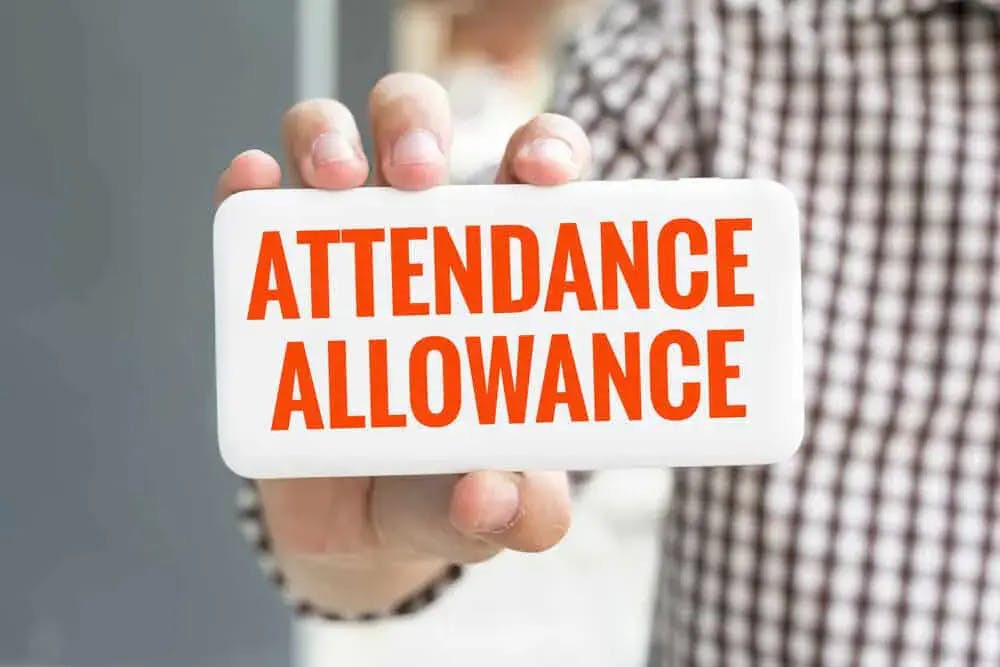Attendance Allowance Rates 2024 | How Much You’ll Get

Estimated Reading Time: 7 minutes
In line with inflation, Attendance Allowance rates increased by 6.7% in April 2024.
You could be eligible for Attendance Allowance if you’ve reached the State Pension age and have a disability, medical condition or illness that affects you and your ability to live independently on a day-to-day basis. People living in a care home who pay for their own care often claim Attendance Allowance.
Here, we’ve explained the Attendance Allowance rates for 2024/2025, along with how much they’ve increased, whether you’re eligible, which rate you’ll get (depending on how much care and support you need) and how to claim.
Kickstart your care search
Discover the best care homes in your area through Lottie.
In this article:
- Attendance Allowance rates for 2024/2025
- How much have Attendance Allowance rates increased in 2024?
- How is Attendance Allowance paid?
- How does Attendance Allowance affect other benefits?
- Benefit cap
- Who is eligible for Attendance Allowance?
- How to claim
Attendance Allowance Rates For 2024/2025
Attendance Allowance is comprised of two different rates. How much Attendance Allowance you receive depends on the following:
- How much difficulty you have on a daily basis
- How much care or supervision you require (such as personal care)
- Whether you need help during the day, at night or both
These two rates are:
- Higher rate - If you need frequent care or supervision during the day and at night, or you have a terminal illness
- Lower rate - If you need frequent care or supervision during the day or at night
Here are the Attendance Allowance rates for 2024/2025, along with how much they’ve increased since 2023/2024:
| Rate | Weekly Amount (2024/2025) | Weekly Amount (2023/2024) | Annual Increase |
|---|---|---|---|
| Higher Rate | £108.55 | £101.75 | £6.80 |
| Lower Rate | £72.65 | £68.10 | £4.55 |
The 2024/2025 higher rate of Attendance Allowance has increased to £108.55 per week, and the lower rate has increased to £72.65 per week. Each year, you could receive £5,644.60 for the higher rate and £3,777.80 for the lower rate.
We’re here to help you find the right care home for you or your loved one. You can request a free list of care homes from our care experts, who will then share homes matching your budget, location and type of care needed. You can also search for a care home through our easy-to-use directory.
How Much Have Attendance Allowance Rates Increased In 2024?
In April 2024, Attendance Allowance rates rose by 6.7%, in line with inflation. This increase also happened to other DWP disability and means-tested benefits, such as Personal Independence Payment (PIP).
As a result, Attendance Allowance increased by the following amounts per week from 2023 to 2024:
- Higher rate = £6.80
- Lower rate = £4.55
If you qualify for the 2024/2025 higher rate of Attendance Allowance, you’ll get £108.55 a week, £470.38 a month and £5,644.60 a year. During 2023/2024, you would have got £101.75 a week, £440.92 a month and £5,291 a year. So, this is an increase of £6.80 a week, £29.46 a month and £353.60 a year.
If you qualify for the 2024/2025 lower rate of Attendance Allowance, you’ll get £72.65 a week, £314.82 a month and £3,777.80 a year. During 2023/2024, you would have got £68.10 a week, £295.10 a month and £3,541.20 a year. So, this is an increase of £4.55 a week, £19.72 a month and £236.60 a year.
How Is Attendance Allowance Paid?
Attendance Allowance will be paid straight into your bank or building society account every four weeks.
This money can be spent however you wish, such as to help you remain independent in your own home for longer.
Attendance Allowance is usually paid for a minimum of six months. This could be longer if you still have extra care needs after this point.
How Does Attendance Allowance Affect Other Benefits?
If you begin receiving Attendance Allowance, you may be eligible for additional benefits or credits as a result. You may be eligible for the following:
What’s more, anybody caring for you may also be able to start claiming Carer’s Allowance s a result of you getting Attendance Allowance.
Attendance Allowance is tax-free, so it isn’t considered income when working out any other benefits, meaning none of the other benefits you already receive will be affected.
You should let any organisations who pay your other benefits know that you’re now claiming Attendance Allowance.
Attendance Allowance Benefit Cap
The Benefit Cap is the maximum amount of benefits you can receive. This increased by 10.1% in April 2023, but has remained the same for 2024/2025.
However, the Benefit Cap only applies to people of working age. As Attendance Allowance is a benefit for people above the State Pension age, it doesn’t apply to people who receive Attendance Allowance.
If you or your partner receive Attendance Allowance, you’ll be excluded from the Benefit Cap.
Who Is Eligible For Attendance Allowance?
You’ll be eligible for Attendance Allowance if you:
- Have reached the State Pension age
- Require frequent care and supervision as a result of a disability, medical condition or illness and have needed this care and supervision for at least six months
A formal diagnosis isn’t required to make a claim. The main requirement is that you’ve needed care and supervision, or have experienced difficulties. We have a guide explaining what medical conditions make you eligible for Attendance Allowance.
If you’re under the State Pension age, you may instead be eligible for Personal Independence Payment (PIP).
How To Claim Attendance Allowance
To claim this disability benefit, you’ll need to fill in an Attendance Allowance claim form. To get a form, you can either:
- Call the Attendance Allowance helpline on 0880 731 0122
- Download a claim form through GOV.UK
If you call and your claim is successful, your claim will begin from the date you made the call.
If you choose to download and post your claim form and this claim is successful, your claim will begin from the date this postal form is received.
When filling out this form, provide as much information as possible about your condition and how it affects you on a daily basis, including specific difficulties or symptoms. We have a guide explaining Attendance Allowance pitfalls you should avoid and what to include, to ensure your claim is successful.
The Department for Work and Pensions (DWP) may then get in touch for further information, or they might have a doctor visit you for a formal assessment.
Finally, you’ll receive a letter explaining whether your claim has been successful, how much you’ll get, and from what date.
Lottie matches care seekers with the best care homes for their needs. You can request a free list of homes from our care experts, who will share homes that match your budget, location and type of care needed. You can also search for a care home through our easy-to-use directory.
Frequently Asked Questions
What else am I entitled to if I get Attendance Allowance?
If you receive Attendance Allowance, you may also be entitled to extra benefits and payments such as Pension Credit, Housing Benefit, a Council Tax Reduction and help with health costs.
Do you get a Cold Weather Payment when receiving Attendance Allowance?
The Cold Weather Payment is a means-tested benefit, so receiving Attendance Allowance doesn’t necessarily mean you’re eligible for it. You also usually won’t qualify if you’re living in a care home.
However, you will automatically receive a Winter Fuel Payment if you claim state benefits for pensioners such as the State Pension or Attendance Allowance.
Is Attendance Allowance awarded for life?
If you’re awarded Attendance Allowance, this will last a minimum of six months, but can also be awarded indefinitely. In this case, you won’t need to renew your claim, but your eligibility will still be periodically rechecked (this often takes place on an annual basis).
Free Care Fees & Funding Email Course
Written by our team of experts and designed to help families fund later life care in England.



